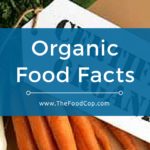Organic Food Facts…
Confused about organic labels on food packaging, and wondering what they really mean?
Labeling requirements for organic food are based on the percentage of organic ingredients in a product, according to standards established by the National Organic Program (NOP). These standards apply to all raw, fresh, and processed food products that contain organic agricultural ingredients. Note that organic food cannot be produced using excluded methods, sewage sludge, or ionizing radiation.
100 percent organic: Products with this label must contain only organically produced ingredients and processing aids (excluding water and salt).
Organic: Products must contain at least 95 percent organically produced ingredients (excluding water and salt). Any remaining ingredients must consist of non-agricultural substances, which are on the approved National List. This includes specific non-organically produced agricultural products that are not commercially available in organic form.
Made with organic ingredients: Processed products that contain at least 70 percent organic ingredients can use this label. Three of the organic ingredients or food groups can also be listed.
Any foods items using an organic label must list each organically produced ingredient in the ingredient label. If a person knowingly sells or labels as organic a food product that is not produced and handled in accordance with the National Organic Program’s regulations, a civil penalty of up to $11,000 can be levied.
Have you ever considered growing your own organic garden? Check out these great tips for getting started!
Do you struggle with preparing clean, healthy food? Get free instant access to shopping guides, checklists, e-books, & more about clean, healthy eating and edible gardens!


